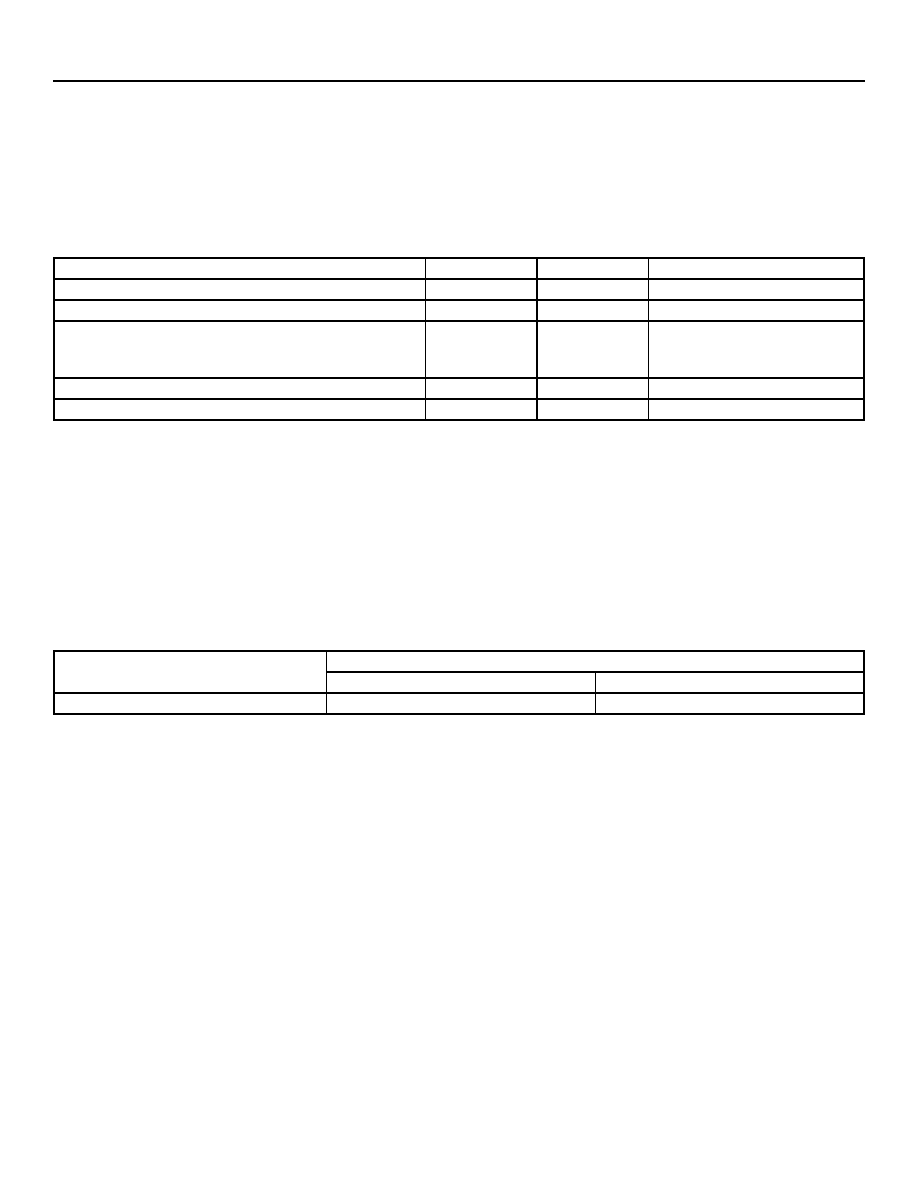- 您現(xiàn)在的位置:買賣IC網(wǎng) > PDF目錄156622 > 4565B2 ATM/SONET/SDH SUPPORT CIRCUIT, PBGA909 PDF資料下載
參數(shù)資料
| 型號: | 4565B2 |
| 元件分類: | 數(shù)字傳輸電路 |
| 英文描述: | ATM/SONET/SDH SUPPORT CIRCUIT, PBGA909 |
| 封裝: | PLASTIC, BGA-909 |
| 文件頁數(shù): | 26/61頁 |
| 文件大小: | 1691K |
| 代理商: | 4565B2 |
第1頁第2頁第3頁第4頁第5頁第6頁第7頁第8頁第9頁第10頁第11頁第12頁第13頁第14頁第15頁第16頁第17頁第18頁第19頁第20頁第21頁第22頁第23頁第24頁第25頁當前第26頁第27頁第28頁第29頁第30頁第31頁第32頁第33頁第34頁第35頁第36頁第37頁第38頁第39頁第40頁第41頁第42頁第43頁第44頁第45頁第46頁第47頁第48頁第49頁第50頁第51頁第52頁第53頁第54頁第55頁第56頁第57頁第58頁第59頁第60頁第61頁

4565B Ultramapper Full Transport Retiming Device
Hardware Design Guide, Revision 2
622/155 Mbits/s SONET/SDH x DS3/E3/DS2/DS1/E1
December 17, 2003
32
Agere Systems Inc.
3 Absolute Maximum Ratings
Stresses in excess of the absolute maximum ratings can cause permanent damage to the device. These are absolute
stress ratings only. Functional operation of the device is not implied at these or any other conditions in excess of those
given in the operational sections of the data sheet. Exposure to absolute maximum ratings for extended periods can
adversely affect device reliability.
3.1 Handling Precautions
Although electrostatic discharge (ESD) protection circuitry has been designed into this device, proper precautions must be
taken to avoid exposure to ESD and electrical overstress (EOS) during all handling, assembly, and test operations. Agere
employs both a human-body model (HBM) and a charged-device model (CDM) qualification requirement in order to
determine ESD-susceptibility limits and protection design evaluation. ESD voltage thresholds are dependent on the circuit
parameters used in each of the models, as defined by JEDEC’s JESD22-A114 (HBM) and JESD22-C101 (CDM)
standards.
3.2 Thermal Parameters (Definitions and Values)
System and circuit board level performance depends not only on device electrical characteristics, but also on device thermal
characteristics. The thermal characteristics frequently determine the limits of circuit board or system performance, and they
can be a major cost adder or cost avoidance factor. When the die temperature is kept below 125 °C, temperature activated
failure mechanisms are minimized. The thermal parameters that Agere provides for its packages help the chip and system
designer choose the best package for their applications, including allowing the system designer to thermally design and in-
tegrate their systems.
It should be noted that all the parameters listed below are affected, to varying degrees, by package design (including paddle
size) and choice of materials, the amount of copper in the test board or system board, and system airflow.
Θ
ΘJA - Junction to Air Thermal Resistance
ΘJA is a number used to express the thermal performance of a part under JEDEC standard natural convection conditions.
ΘJA is calculated using the following formula:
ΘJA = (TJ – Tamb) / P; where P = power
Table 3-1. Absolute Maximum Ratings
Parameter
Min
Max
Unit
Supply Voltage (VDD33)
–0.5
4.2
V
Supply Voltage (VDD15)
–0.3
2.0
V
Input Voltage:
LVCMOS
LVDS
–0.3
5.25
VDD33 + 0.3
V
Power Dissipation
—
mW
Storage Temperature Range
–65
125
°C
Table 3-2. ESD Tolerance
Device
Minimum Threshold
HBM
CDM
4565B
2000 V
500 V
相關PDF資料 |
PDF描述 |
|---|---|
| 45APC180K | 1 ELEMENT, 18 uH, GENERAL PURPOSE INDUCTOR |
| 45APC470K | 1 ELEMENT, 47 uH, GENERAL PURPOSE INDUCTOR |
| 45APC272K | 1 ELEMENT, 2700 uH, GENERAL PURPOSE INDUCTOR |
| 45K101-101H3 | CABLE TERMINATED, FEMALE, RF CONNECTOR, CRIMP, JACK |
| 45K101-102H3 | CABLE TERMINATED, FEMALE, RF CONNECTOR, CRIMP, JACK |
相關代理商/技術參數(shù) |
參數(shù)描述 |
|---|---|
| 4565-BLK | 制造商:Pomona Electronics 功能描述:ACCESSORIES, MAXIGRABBER TEST CLIP |
| 4565-BLK-3XL | 功能描述:3M DISPOSABLE CHEMICAL PROTE 制造商:3m 系列:* 零件狀態(tài):在售 標準包裝:1 |
| 4565-BLK-4XL | 功能描述:3M DISPOSABLE CHEMICAL PROTE 制造商:3m 系列:* 零件狀態(tài):在售 標準包裝:1 |
| 4565-BLK-L | 功能描述:3M DISPOSABLE CHEMICAL PROTE 制造商:3m 系列:* 零件狀態(tài):在售 標準包裝:1 |
| 4565-BLK-M | 功能描述:3M DISPOSABLE CHEMICAL PROTE 制造商:3m 系列:* 零件狀態(tài):在售 標準包裝:1 |
發(fā)布緊急采購,3分鐘左右您將得到回復。